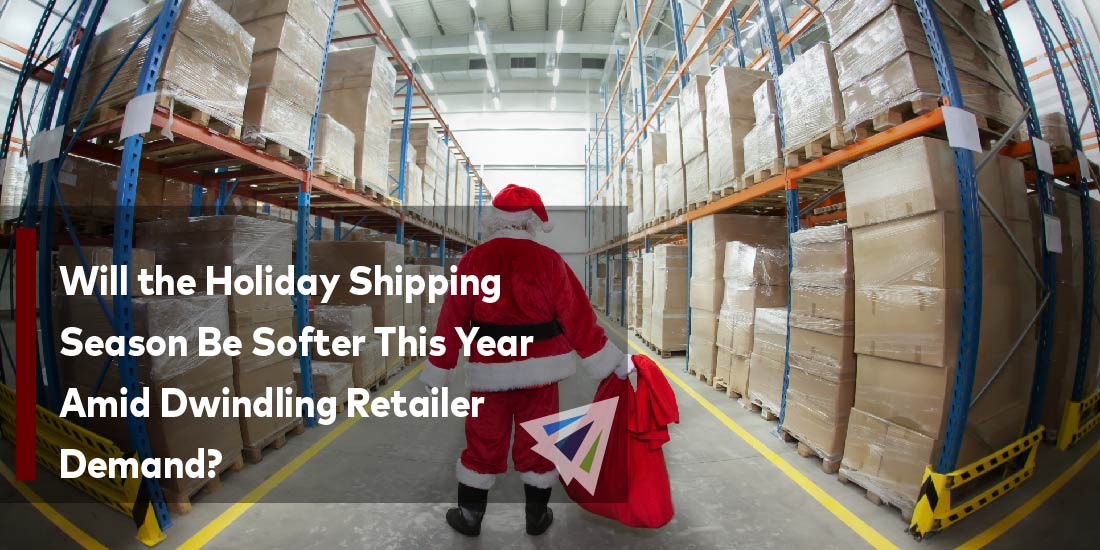Will the Holiday Shipping Season Be Softer This Year Amid Dwindling Retailer Demand?
The economy has proven rather volatile over the last couple of months in the United States. Between the housing market dropping, the effects on Wall Street and the stock market, and supply chain concerns with congestion, capacity, and equipment availability, consumer demand began dropping towards the middle of 2022. As civilians and businesses remain cautious of a potential recession, demand across the board has seen a downturn, and it’s looking as though the effects may stretch through the remainder of the season.
According to Ben Hackett, the founder of Hackett Associates which co-publishes the Global Port Tracker with the Nation Retail Federation, this drop in demand is lowering the overall volume of imports, which is pushing carriers to lay up ships and slow down on their services.
The GPT is forecasting that this November, overall U.S. container imports will be down nearly 10% from the same time last year. Last month, experts were only forecasting that imports would be down about 5% year-over-year, so as time has gone on, predictions are becoming less hopeful. December U.S. imports are expected to follow a similar path.
However, since consumer demand is not being affected by seasonal patterns, but rather the potential of an upcoming recession, supply chain experts are assuming that demand will remain low going into 2023. This means January imports may be down in roughly the 7%-10% range year-over-year compared to 2021, and if demand continues to drop, February could see a dip in the 15%-20% range year-over-year.
Reports indicate that trans-pacific carriers are canceling sailings in increasing frequency since imports from Asia are dropping. Since the majority of cargo is coming in to the west coast ports from purchases from Asia, the cancelling of sailings is an indication we have reached the end of the demand growth stretch.
While consumer spending may increase over the next couple months throughout the holiday season, the inventory that stocks retailers’ shelves for those sales had entered the U.S. several months ago in preparation for heightened spending activity. There’s always a delay between actual consumer activity and international supply chain activity.
If you have any questions about how international supply chain and market conditions may affect your business, please don’t hesitate to reach out to us! We understand that between the potential recession and decrease in retailer buying activity combined with an increase in Holiday-related consumer spending, the outcome of the next couple months is far from simple to predict. We’d love to talk to you and your team about what you can do through the remainder of the year and stretching into the first couple of months of next year to mitigate risk, decrease shipping costs, and increase your supply chain efficiency!
